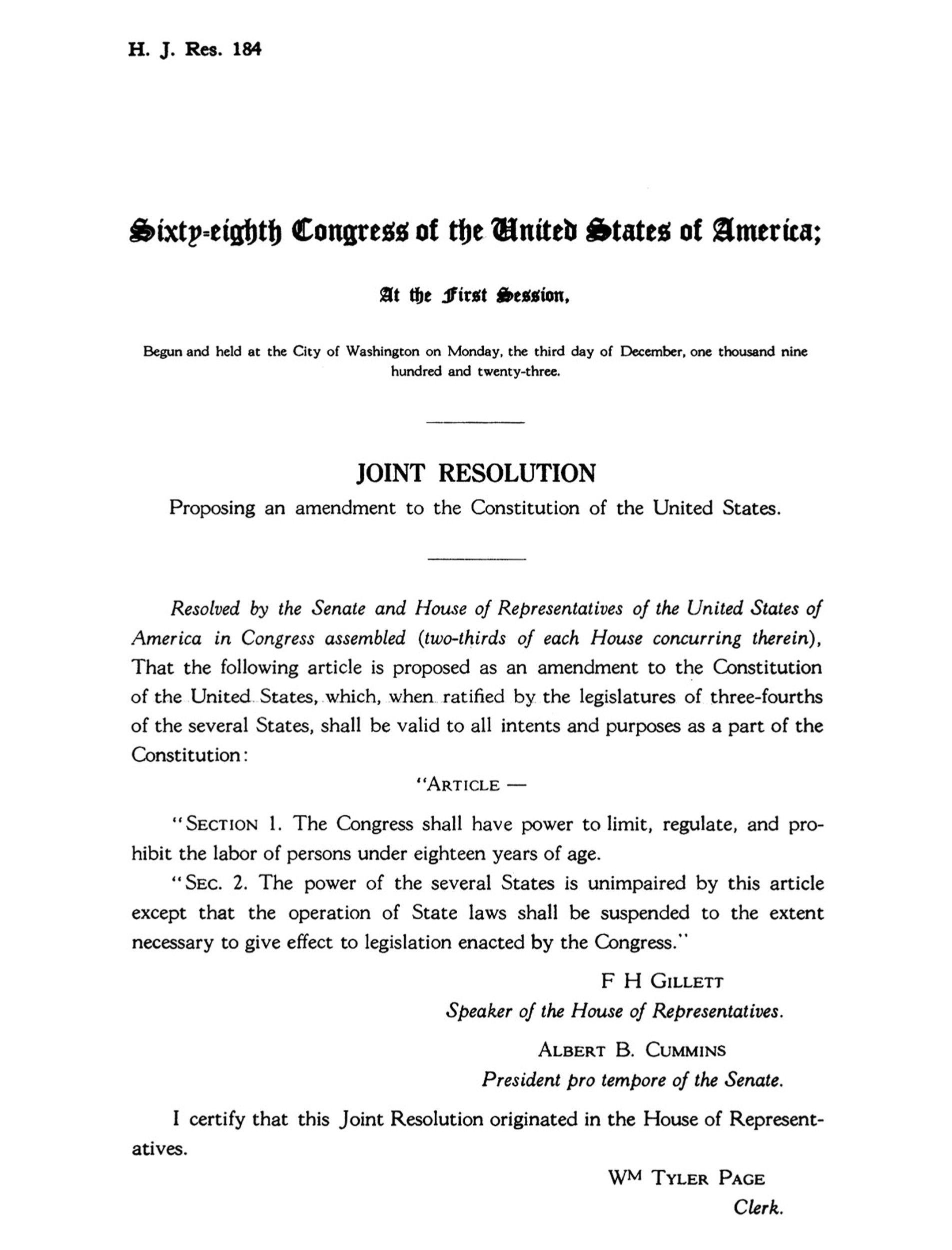House Joint Resolution Proposing an Amendment to the Constitution Respecting Child Labor
12/03/1923
Add to Favorites:
Add all page(s) of this document to activity:

This constitutional amendment, proposed on December 3, 1923, was to give Congress the power to regulate child labor but was never ratified by the states. A joint resolution is a formal opinion adopted by both houses of the legislative branch. A constitutional amendment must be passed as a joint resolution before it is sent to the states for ratification.
The National Child Labor Committee (NCLC), organized in New York City in 1904, investigated child labor conditions and lobbied for the end of child labor. Over the opposition of business, supporters of states' rights and President Wilson, the NCLC convinced Congress to establish the Children's Bureau in 1912 and to pass the Keating-Owen Federal Child Labor Law in 1916. Although Congress approved a joint resolution proposing a child labor amendment to the Constitution, it was never ratified by the necessary three-quarters of the state legislatures.
The National Child Labor Committee (NCLC), organized in New York City in 1904, investigated child labor conditions and lobbied for the end of child labor. Over the opposition of business, supporters of states' rights and President Wilson, the NCLC convinced Congress to establish the Children's Bureau in 1912 and to pass the Keating-Owen Federal Child Labor Law in 1916. Although Congress approved a joint resolution proposing a child labor amendment to the Constitution, it was never ratified by the necessary three-quarters of the state legislatures.
This primary source comes from the General Records of the United States Government.
National Archives Identifier: 5730384
Full Citation: Printed Copy of House Joint Resolution 184 of December 3, 1923, Proposing an Amendment to the Constitution Respecting Child Labor; 12/03/1923 ; General Records of the United States Government, Record Group 11. [Online Version, https://docsteach.org/documents/document/amendment-child-labor, April 25, 2024]Rights: Public Domain, Free of Known Copyright Restrictions. Learn more on our privacy and legal page.



